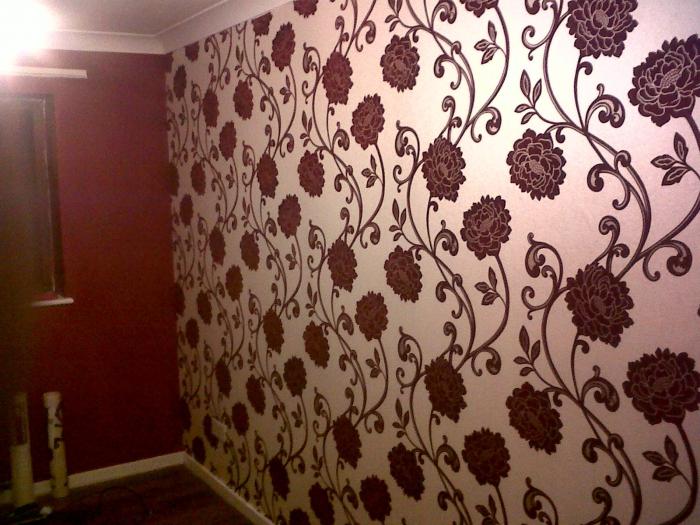DIY wallpapering is not as difficult as it might seem at first glance. All you need is patience, accuracy, a minimal set of tools and knowledge of some of the nuances that will be described below.
First of all, you need to calculate the amount of material needed. To do this, you need to calculate the area of the walls and add to it 10-15% "in reserve", the number of rolls is always rounded up, and even better take one more.
As for the wallpaper itself, two types are widespread on the market: paper and non-woven. The first wallpapers for wall gluing have a low cost and are made of environmentally friendly materials, but they quickly fade and poorly hide the unevenness of the wall. Non-woven virtually no flaws, except for the high price. Sticking wallpaper with your own hands of this particular type is more suitable for beginners, since glue is applied only to the wall, and their base itself is more durable than paper ones.
Before you start gluing, you need to prepare the walls, remove the old wallpaper. To make this faster, they can be soaked from the spray bottle with water or a mild detergent solution, wait for the glue to soak, and remove with a spatula. In order for the
DIY wallpapering to have a better result, you need to repair the cracks and bumps in the wall. For this, a gypsum-based
finishing putty is suitable. Previously, a newspaper was used for these purposes, but this was caused by a shortage of dry building mixtures, now any construction store has a wide range of similar products. Primed walls are also recommended. This takes a little time, and the result of pasting will improve significantly.
Dissolve wallpaper glue with water in the proportions specified in the instructions. It is better if the glue is specifically designed for your type of wallpaper. Apply glue is a soft brush on the wall, and if the wallpaper is made of paper, then on the canvas itself. Before you begin, look at the instructions for combining the picture, the best option for beginners when the combination is not necessary. Strips should be cut with an allowance of three or four centimeters on the floor and walls, gluing adjacent sheets with an overlap of 2-3 millimeters so that the light from the window does not fall under the seam, so it will be almost invisible. From under the glued cloth, drive out air and excess glue from top to bottom and from the center to the edges (herringbone). You can use a clean, dry cloth for this. When performing this operation, be careful not to apply too much force, otherwise you can tear the canvas. Doing wallpaper with your own hands ends by removing the glue squeezed out from under them and ironing the seams.

Within a week, the wallpaper will dry, while they sit slightly, but allowances from all sides compensate for this change. Avoid drafts in the pasted room during this period, otherwise the stripes will begin to lag behind and at the edges of the wall, and all your work will go down the drain.
Following these tips, you can quickly finish the repairs yourself, then call the construction company and ask: “How much does wallpaper gluing cost?” Then you will surely be happy that you saved a decent amount of money, which, as you know, is never too much.